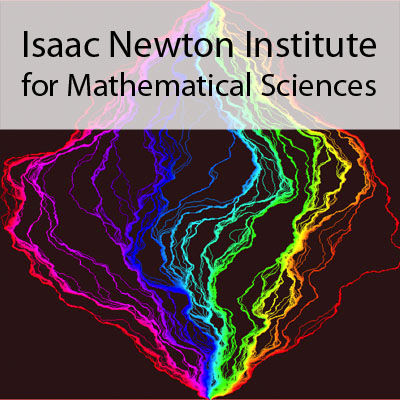Log-correlated Gaussian fields: study of the Gibbs measure
50 mins 19 secs,
731.42 MB,
MPEG-4 Video
640x360,
29.97 fps,
44100 Hz,
1.93 Mbits/sec
Share this media item:
Embed this media item:
Embed this media item:
About this item

| Description: |
Zindy, O (Université Pierre & Marie Curie-Paris VI)
Thursday 19 March 2015, 11:30-12:30 |
|---|
| Created: | 2015-03-20 17:06 |
|---|---|
| Collection: | Random Geometry |
| Publisher: | Isaac Newton Institute |
| Copyright: | Zindy, O |
| Language: | eng (English) |
| Distribution: |
World
|
| Explicit content: | No |
| Aspect Ratio: | 16:9 |
| Screencast: | No |
| Bumper: | UCS Default |
| Trailer: | UCS Default |
| Abstract: | Co-author: Louis-Pierre ARUIN (CUNY)
Gaussian fields with logarithmically decaying correlations, such as branching Brownian motion and the two-dimensional Gaussian free field, are conjectured to form universality class of extreme value statistics (notably in the work of Carpentier & Le Doussal and Fyodorov & Bouchaud). This class is the borderline case between the class of IID random variables, and models where correlations start to affect the statistics. In this talk, I will describe a general approach based on rigorous works in spin glass theory to describe features of the Gibbs measure of these Gaussian fields. I will focus on the two-dimensional discrete Gaussian free field. At low temperature, we show that the normalized covariance of two points sampled from the Gibbs measure is either 0 or 1. This is used to prove that the joint distribution of the Gibbs weights converges in a suitable sense to that of a Poisson-Dirichlet variable. |
|---|---|
Available Formats
| Format | Quality | Bitrate | Size | |||
|---|---|---|---|---|---|---|
| MPEG-4 Video * | 640x360 | 1.93 Mbits/sec | 731.42 MB | View | Download | |
| WebM | 640x360 | 671.78 kbits/sec | 247.57 MB | View | Download | |
| iPod Video | 480x270 | 521.8 kbits/sec | 192.30 MB | View | Download | |
| MP3 | 44100 Hz | 249.74 kbits/sec | 92.13 MB | Listen | Download | |
| Auto | (Allows browser to choose a format it supports) | |||||

